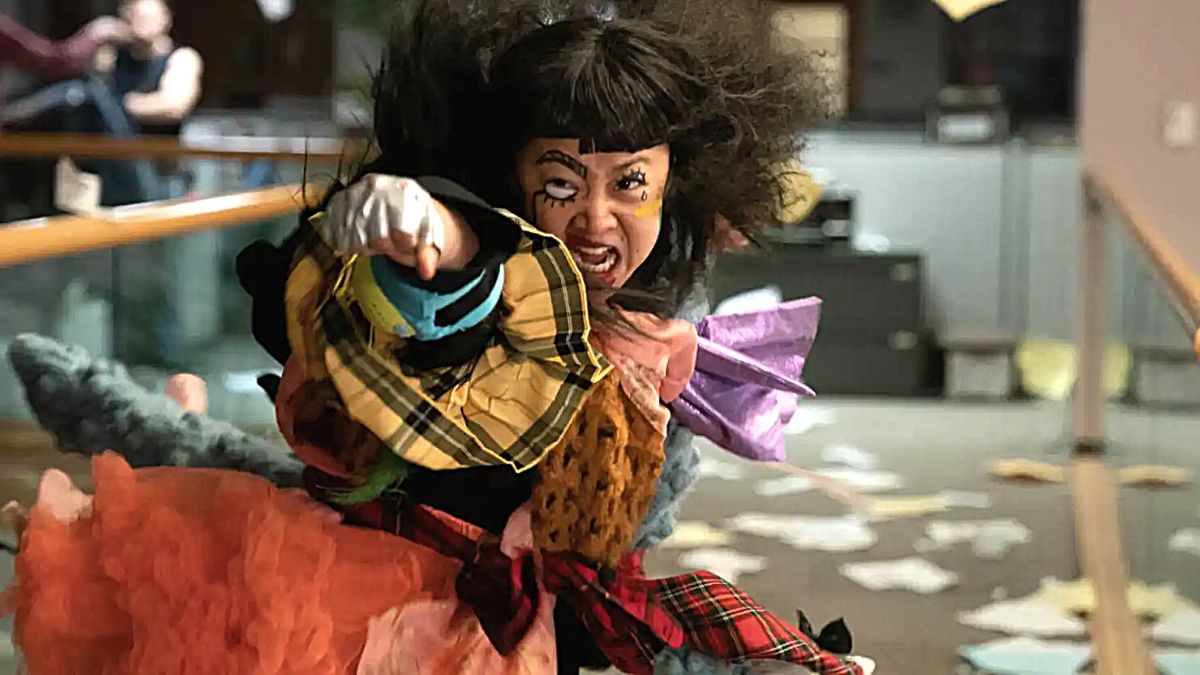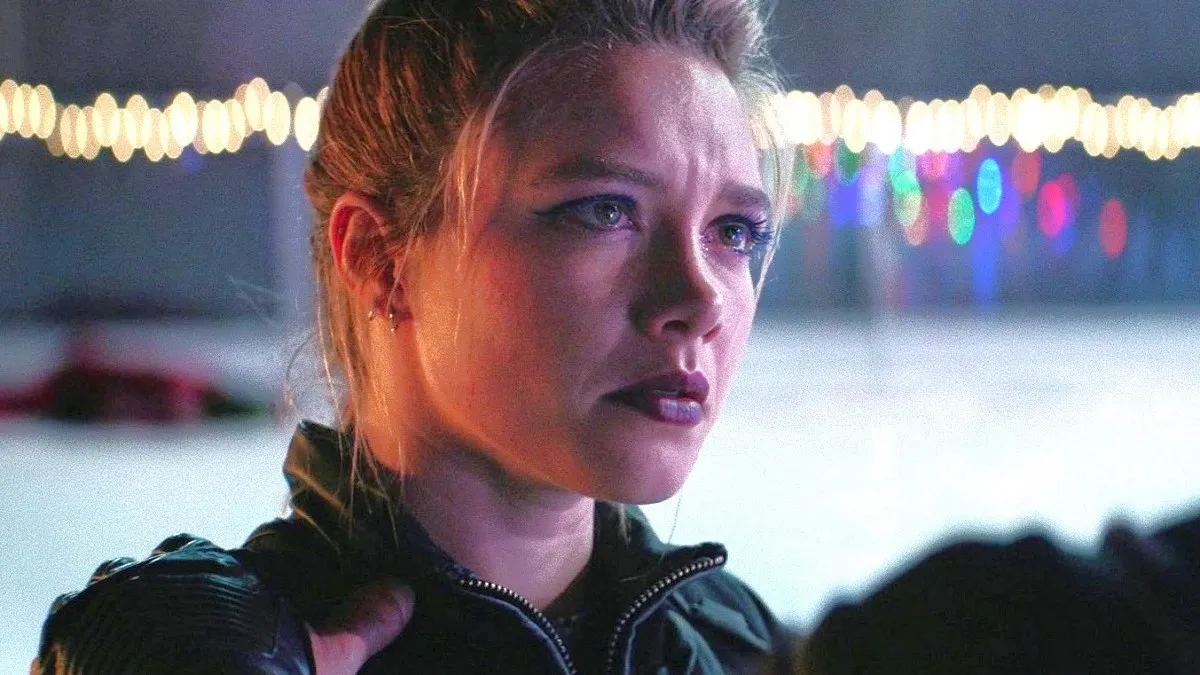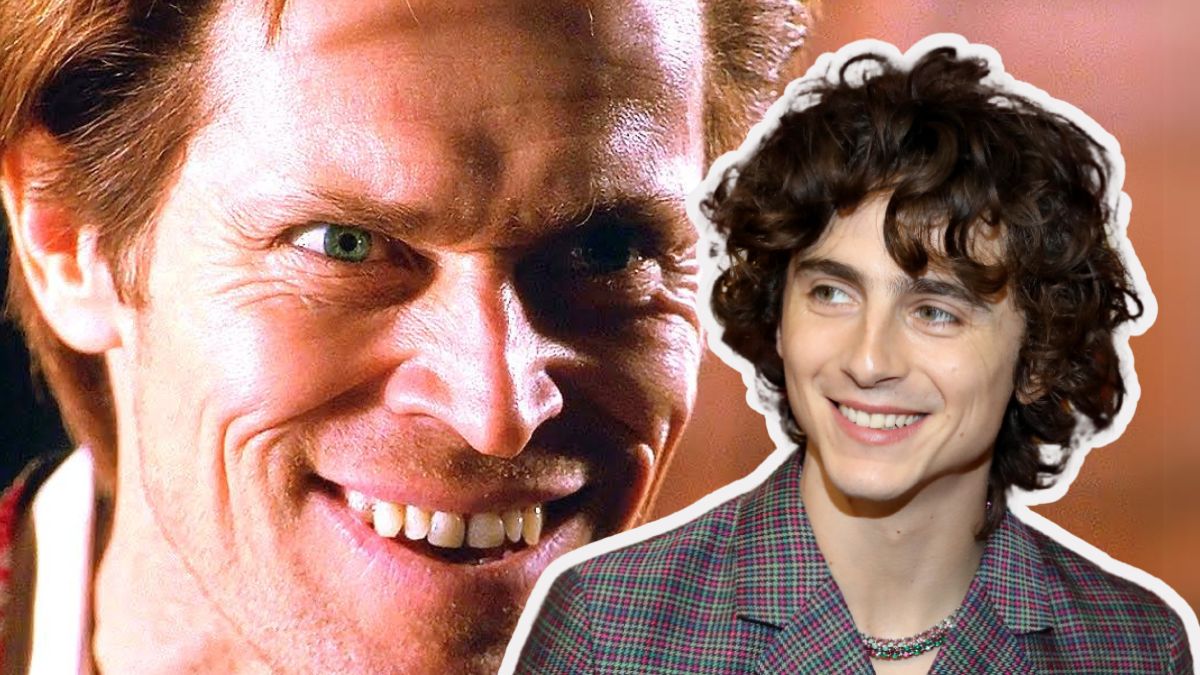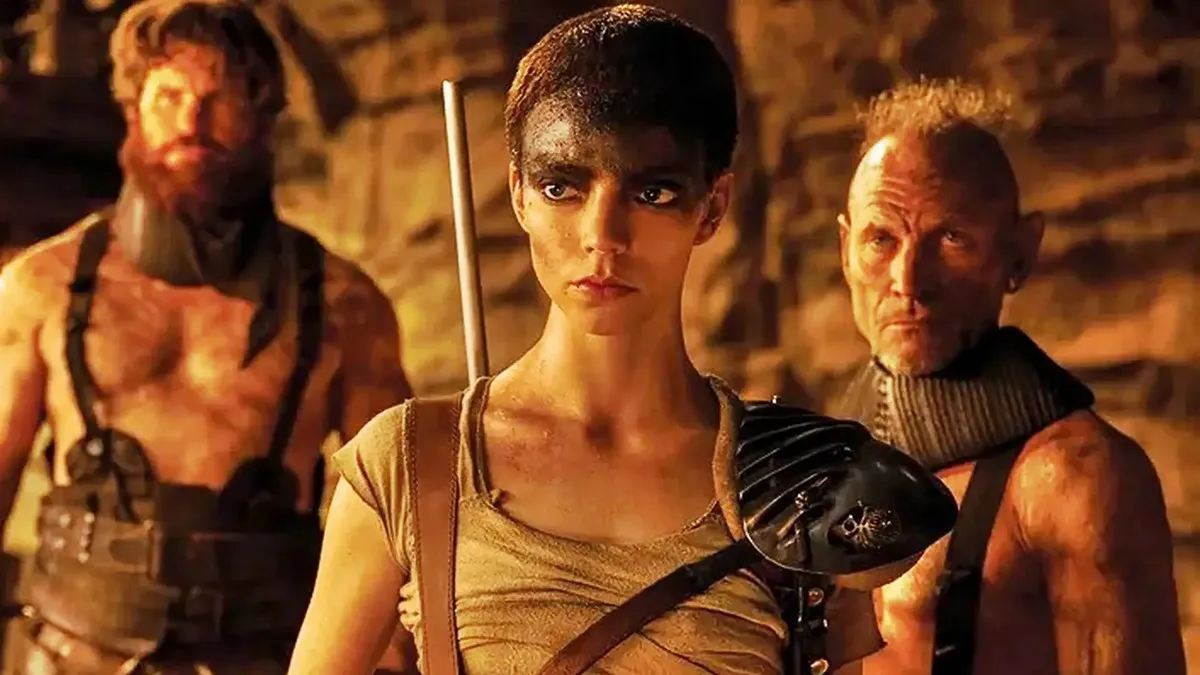We struggle to think of a film that manages to cover as much ground both thematically and in its genres as Daniel Kwan and Daniel Scheinert’s 2022 modern masterpiece Everything Everywhere All at Once. The Oscar-winning endeavor, much like its title and multiversal plot, is a lot of films at once.
Everything Everywhere is a martial arts sci-fi family drama about the immigrant experience and the meaning of life, and, despite how insurmountable of a task that might sound, the Daniels absolutely nailed it on all fronts. The result was a thought-provoking, pure fun, and intensely emotional experience that had audiences and critics the world over championing its success.
However, the result is also something that had never been done before, so if you’re hoping to find a film that ticks every little box of Everything Everywhere All at Once, you won’t find it on this list (also, please redirect me to that film, if you find it). The good news is that there are plenty of movies that contain and even expand upon the individual themes and genres each viewer might favor within the Daniels’ magnum opus.
Spider-Man: Across the Spider-Verse (2023), dir. Joaquim Dos Santos, Justin K. Thompson, Kemp Powers
A big element of Everything Everywhere All At Once is, obviously, the multiverse — a concept that the current cinematic landscape seems to be obsessed with. There have been at least five other high-profile movies about the multiverse released in the last decade, with their takes on the subject verging from underwhelming to groundbreaking. EEAAO tips quite clearly toward that latter end of the scale, but if there is one film that can compete against the Daniels for the best approach to the multiverse of all time it’s Sony’s Spider-Man: Across the Spider-Verse.
The 2023 animated film not only managed to surpass its predecessor (2018’s Into the Spider-Verse), which was enough of a tall order in and of itself, but it also further revolutionized the concept of multiple universes and versions of the same lives. Besides the spellbinding animation, this Spidey film shares a lot of the same existentialist questions present in EEAAO that come from the realization that there are multiple “yous” out there, taking it a step further by examining what that means for a character as iconic as Spider-Man.
Crouching Tiger, Hidden Dragon (2000), dir. Ang Lee
Daniel Kwan and Daniel Scheinert initially planned to have EEAAO be led by Jackie Chan but once the actor rejected the offer they looked at the script again and reimagined what it would look like with Evelyn at the center. With Michelle Yeoh, a legend of Wuxia films, on board, the possibilities became endless. Yeoh said the decision to accept the role was an easy one because she liked the challenge it presented and the opportunity to play a character that was allowed to be vulnerable. The result was one of the most earnest, creative collaborations in recent memory.
Although she’s a bonafide legend, the exposure of EEAAO brought Yeoh to a whole new audience eager to discover her past works. Ang Lee’s Crouching Tiger, Hidden Dragon is arguably the actress’ most memorable performance after her Oscar-winning turn. A powerful and beautifully directed Wuxia martial arts film about love, loyalty, and honor, it stars Yeoh as Yu Shu Lien, the head of a private security company who must resist her feelings for her friend and swordsman Li Mu Bai following the death of her husband.
The Matrix (1999), dir. Lana Wachowski, Lilly Wachowski
Everything Everywhere All at Once is the closest successor to The Matrix in the 21st century and, most importantly, in the context of the saturated and unoriginal landscape of today’s movie world. It’s similarly bold and risk-prone, and just as action-packed and entertaining.
While The Matrix grappled with the threat of technology taking over the Earth and a secret ploy that inserted humans in a simulation, EEAAO is the post-modern equivalent that tackles the fear of the possible existence of multiple universes. Whatever the narrative device, they both set their characters up against the idea that nothing we do really matters at all and that life is meaningless in the large scope of things. It’s these existentialist and futuristic themes, allied with iconic kung-fu inspired fight sequences that made The Matrix a pop culture staple, reproduced to exhaustion — a fate that will most likely follow the Daniels’ 2023 smash-hit.
Inception (2010), dir. Christopher Nolan
Sometimes what we like about a film isn’t exactly the content of its plot or even the nature of its characters. Narrative styles and devices, and especially the way they make us feel, are often just as important. Inception has some of the same themes of family and trippy visuals found in Everything Everywhere All At Once, but where it most reflects the Oscar-winning film is in its brilliant depiction of worlds within worlds and the technologies used to jump between them. Likewise, there’s also a lot of action in this Christopher Nolan wild ride as Leonardo DiCaprio’s Dom Cobb attempts to implant an idea into someone’s subconscious — all so he can return home to his family.
We didn’t want this list to be repetitive, so we decided not to give it its own entry, but if you watch and like Inception, you should definitely check out the brilliant 2006 anime film Paprika, which is wildly believed, albeit not confirmed, to have inspired Nolan to make his version.
In the Mood for Love (2000), dir. Wong Kar-wai
Strip Everything Everywhere All at Once of its mind-spinning editing and theatrical fight scenes, and you’re left with a heartfelt reflection about the things that matter most in life. Evelyn and Waymond’s relationship plays a big part in fleshing out the emotional core of the film, as it reimagines the different paths the couple carved for themselves across the multiverse. The conclusion they eventually reach is that in almost all of them, they were detrimental to each other’s lives.
The universe where Evelyn is a movie star and meets an older Waymond at one of her premieres is directly inspired by the filmography of Hong Kong master Wong Kar-wai, resulting in the film’s most quotable line about taxes and laundry. Take this as an invitation to delve into Wong’s intoxicating informal love trilogy composed of 1990’s Days of Being Wild, 2000’s In the Mood for Love, and 2004’s 2046, where the filmmaker deconstructs the longing, regret, and impulsiveness that come with being in love.
Kung Fu Hustle (2004), dir. Stephen Chow
While Crouching Tiger, Hidden Dragon is a good martial arts follow-up to EEAAO for those who can’t get enough of Michelle Yeoh, the style of the fight sequences in the Daniels’ film is a lot less graceful and a lot more comedic than the ones found in the Ang Lee title. The Oscar-winning directors have cited the legendary Hong Kong martial arts choreographer and film director Yuen Woo-ping as one of their references.
Yuen choreographed Kung Fu Hustle, an action comedy film from 2004 by Stephen Chow set in 1940s Shanghai. Filled to the brim with references to both Chinese tradition and Western pop culture, this parody film includes a lot of the same visual gags and exaggerations that permeate EEAAO, as well as the central plot of an underdog who finds in kung-fu the vehicle to achieve his full potential.
Scott Pilgrim Vs. The World (2010), dir. Edgar Wright
In the same vein as Kung Fu Hustle, Scott Pilgrim Vs. The World finds its place on this list thanks to its extravagant, wacky, and rather silly comedic tone and comic-book-like fight sequences. If you’re looking to have as much of a great time watching a film as you did with EEAAO, this 2010 cult classic might be the answer.
The film’s cast is filled with would-be stars, starting with Michael Cera and Mary Elizabeth Winstead in the lead as Scott Pilgrim and Ramona Flowers, and including Chris Evans, Brie Larson, Aubrey Plaza, Anna Kendrick, Kieran Culkin, Jason Schwartzman, and a bunch more. Its premise is almost just as silly and endearing as EEAAO‘s, with Scott having to battle Ramona’s seven evil exes to be able to date her, all the while trying to win the Toronto International Battle of the Bands. The action doesn’t fall far behind either, with the film receiving praise for the inclusion of comic book and video game elements in its visual style, considered wildly innovative and creative at the time.
Mind Game (2004), dir. Masaaki Yuasa
Among all the weirdness found in most of the elements in this list, Mind Game might just take the cake. Everything Everywhere All At Once‘s sausage fingers, googly eyes, butt plugs, and raccacoonies almost pale in comparison to the wild experimental world created by Japanese animation genius Masaaki Yuasa in his 2004 directional debut.
The film’s protagonist, 20-year-old Nishi, struggles with the same kind of existential dread as EEAAO‘s Jobu Tupaki as he navigates life and death and what it is that makes a lifetime worthy and fulfilling. Throughout the film, he learns to live without fear while going on several eccentric adventures. Masaaki translates his character’s inner turmoil through boundary-breaking animation which borrows from almost every single art style and technique under the sun including collage, watercolor, live-action, and pencil sketch. Like EEAAO, Mind Game is a thunderous and quick-paced feast for the eyes that attempts to deliver an important message about what we’re all doing in this world.
Turning Red (2022), dir. Domee Shi
Above anything else, Evelyn and Joy’s turbulent mother-daughter relationship is what truly defines Everything Everywhere All at Once. Coming from different generations of an immigrant family, Evelyn and Joy host a snowball of masticated family trauma that has affected and almost broken their bond. As Joy must contend with failing her mother’s expectations, Evelyn is blinded by the need to impress her own father.
Disney Pixar’s Turning Red is almost identical in its own central conflict, albeit focusing more on the changes that occur during puberty. The protagonist, 13-year-old Mei suddenly undergoes a mystical change in her life that her mother and all the women in the family before her have learned to conceal. She quickly learns that the magic, and how it makes her stand out, isn’t necessarily negative, as previously believed, and most reason with her mother to break centuries of female tradition.
Ikiru (1952), dir. Akira Kurosawa
We meet Evelyn and Waymond buried in tax forms, payslips, and receipts, as they prepare for a dreadful audit with the unsettling IRS agent Deirdre, played by a fantastic Jamie Lee Curtis. The movie sets this scenario up, and rightfully so, as the most painfully mundane and exasperating experience of modern existence. What follows is the family’s attempt to break free from their underwhelming and bureaucratic lifestyle to find any superior meaning that might make life worth living.
There’s an early sequence in Akira Kurosawa’s sensible masterpiece Ikiru, from 1952, where a group of women attempting to make a complaint about a sewage pit in their neighborhood is consecutively redirected to virtually every department in city hall, with no one really willing to help them in any capacity — a fate perhaps even more real and worse than what the Wangs must deal with in EEAAO. At the center of the film is Kanji Watanabe, a public servant nearing his retirement, who finds out he has stomach cancer and decides to make something of his life while he still can. The two films both feature redtape as the ultimate villain which has turned life into a bleak and repetitive succession of days — and they both teach us that there’s hope to be had yet.







